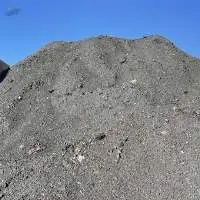
It is one of the main machines in the process of standard rubber. It is specially designed for removing impurity and shredding rubber sheet. With enlarging the surface-area of the rubber material by the hammer mill machine, it is easier to remove the moisture in hot wind drying system.
Supplier: Cast iron skulls, cast iron borings and turnings, steels skulls, eaf skulls, plate iron, mill scale, metal scrap, incinerated scrap (e46)
1 101-68-8 4,4'-Diphenylmethane diisocyanate 2 9016-00-6 Poly(dimethylsiloxane) 3 26471-62-5 Tolylene diisocyanate 4 100-42-5 Styrene 5 141-32-2 Butyl acrylate 6 107-13-1 Acrylonitrile 7 106-99-0 Buta-1,3-diene 8 75-38-7 1,1-difluoroethylene 9 9-38-9 Chlorotrifluoroethylene 10 111-44-4 2,2'-Dichlorodiethyl ether 11 1187-93-5 Trifluoromethyl trifluorovinyl ether 12 21645-51-2 Aluminum hydroxide 13 116-14-3 Tetrafluoroethene 14 116-15-4 Hexafluoropropylene 15 126-99-8 Chloroprene 16 103-11-7 2-Ethylhexyl acrylate 17 140-88-5 Ethyl acrylate 18 78-79-5 Isoprene 19 96-33-3 Methyl acrylate 20 1300-21-6 Dichloroethane
Mill scale, is formed on the outer surfaces of plates, sheets or profiles when they are being produced by rolling hot iron or steel billets in rolling or steel mills. It looks like a hard brittle sand and is mainly composed of iron oxides, mostly ferric, and is bluish black in color. Being produced during the reheating, conditioning and hot rolling operation for the production of steel articles, the mill scale initially adheres to the steel surface and protects it from atmospheric corrosion, provided no break occurs in this coating. From the chemical and physical analysis performed on the scrap, and according to the european environmental rules, the material has been classified as a special non dangerous waste, listed in green list In particular the mill scale can be classified as follows: Einecs (european commission no.): 266-007-8 Waste code: 10 02 10 Basel code: b 12 30 Hs code: 2619.00
We are glad to propose 500 MT of stain less steel mill scale. Mill scale is formed on the outer surfaces during by the hot rolling lamination of stainless-steel products. At a visual inspection the material is a hard brittle sand and is mainly composed of iron oxides, mostly ferric, and is bluish black in colour, but it also contains considerable alloying elements such as chromium and nickel. The recovery ratio after melting in furnace for the most valuable alloy elements is: - Ni: 3.5 - 4.5% - Cr: 6-8% From the chemical and physical analysis performed on the scrap, and according to the European environmental rules, the material has been classified as a special non dangerous waste, listed in green list. In particular the mill scale can be classified as follows: Waste code: 10 02 10 The material is stored on cemented flooring, and it can be loaded loose in tipper trucks or containers. Chemical analysis of the material is available on request.
We can supply: CARD FLY 100% COTTON BALES. Post industrial. Spinning mill waste. Can load in 1x40HC container approx.. 20 MT net. Ready for shipment. Photos available upon request. If you are interested kindly contact us for more information (price, available quantity etc.). You are welcome to visit our company premises and supervise our materials. Certificate ISO: 9001, ISO: 14001, OHSAS 45001, AQSIQ and CCIC.
Butyl Reclaimed Rubber
Natural Reclaimed Rubber
Super Fine and High Tensile Grade as per customers requirements



